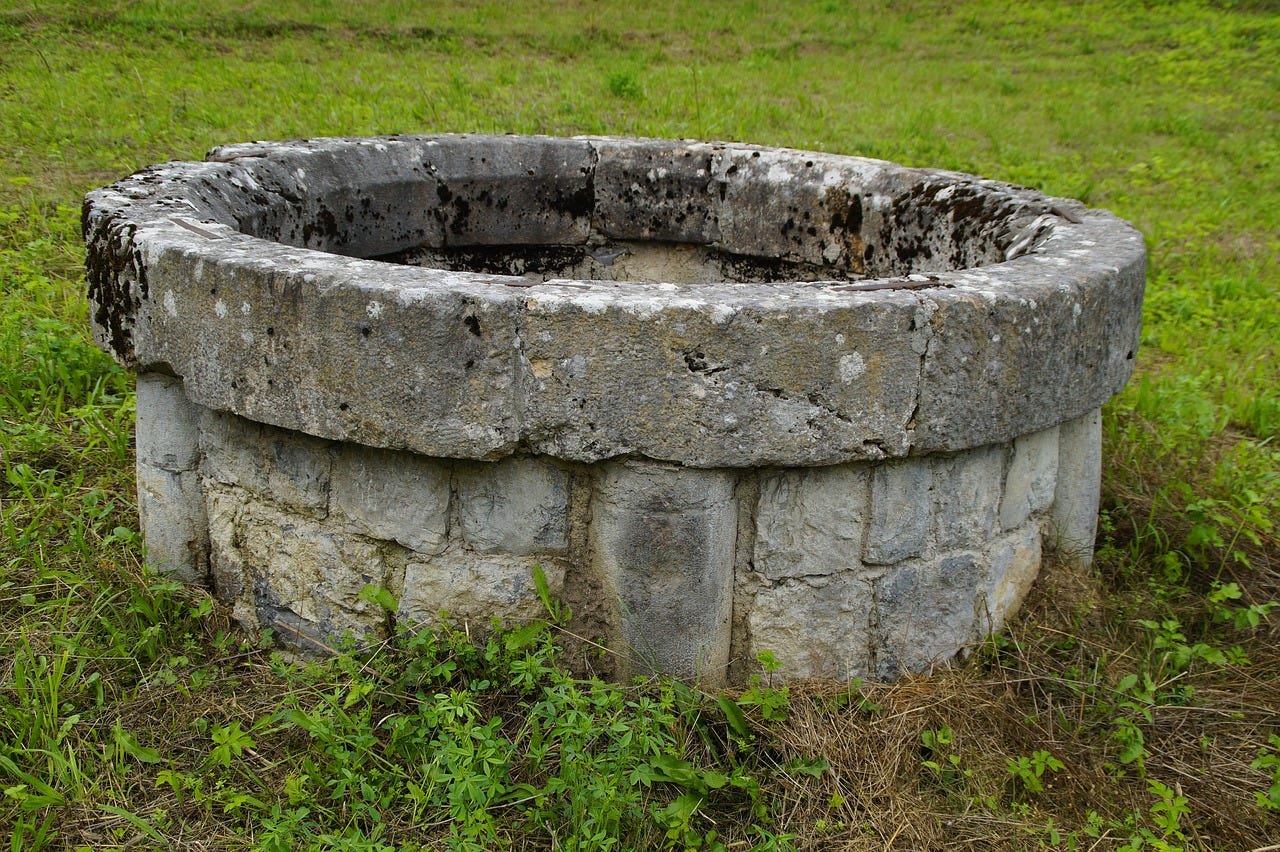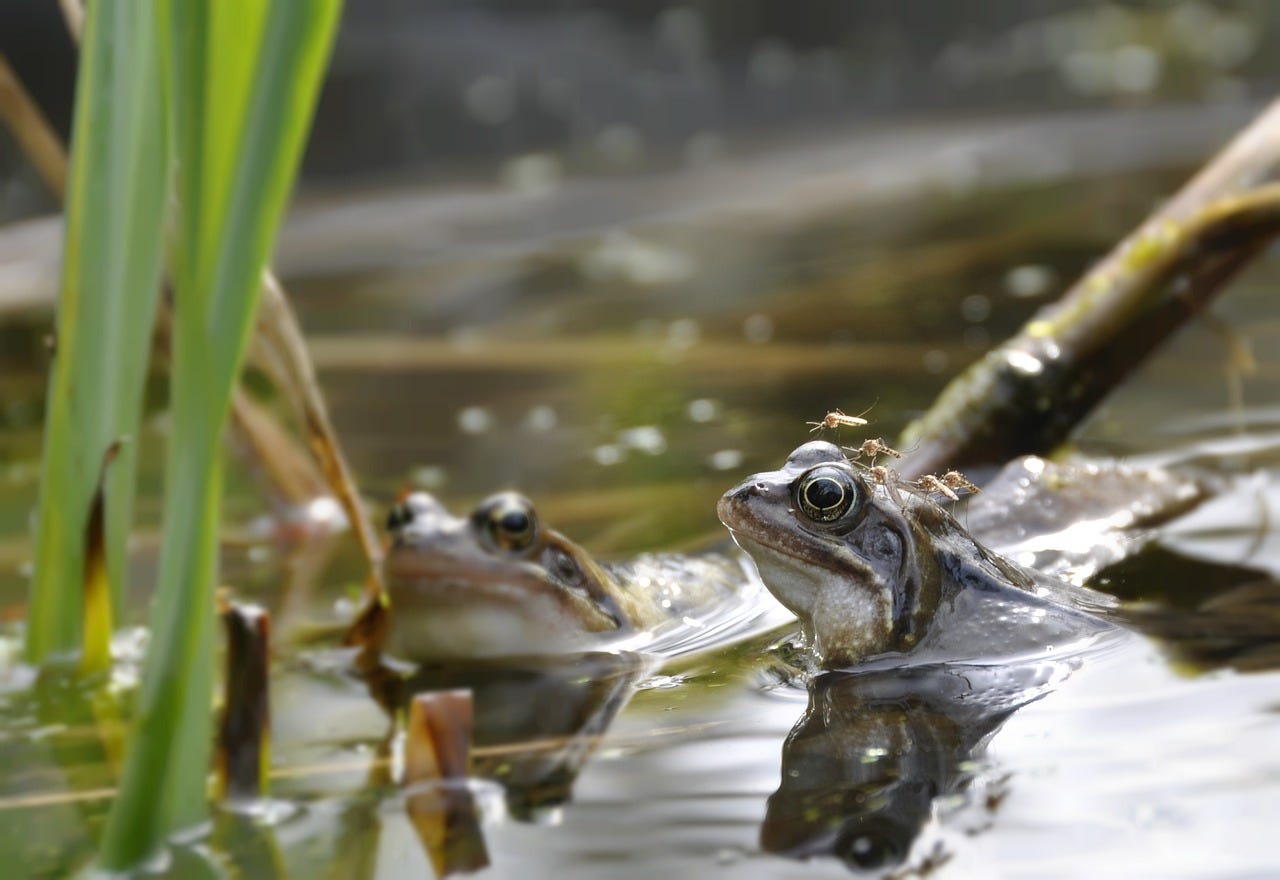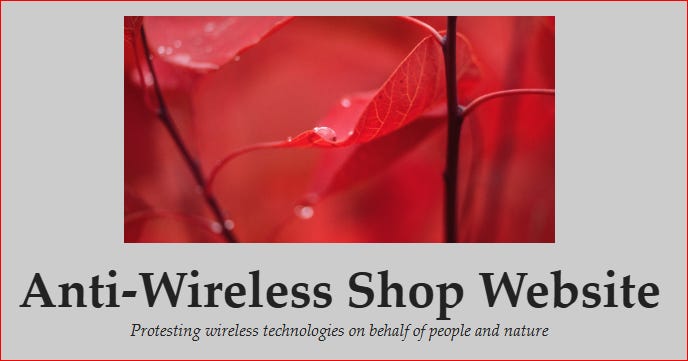A Tale of Two Cisterns
Guest Post by Diana Kordas, Samos, Greece
NGO campaigns to protect bees and other pollinators often point to pesticide use, but other countries including Greece that have not used ago-chemicals are also experiencing a decline in biodiversity.
Naturalist Diana Kordas has been documenting the damage occurring to the island’s ecosystem in Greece - since the installation of 5G. (Links to some of her previous work at bottom of post)
“This area has no pesticides or agrochemicals.”
The number of individuals who sustain a direct relationship with nature has declined in direct proportion to screen use and industrialization.
The equinox, football, and election seasons are approaching. Which receives the most attention?
Telecommunications technology has not been tasked with protection of the environment or human health, so- it isn’t. Informed citizen scientists with direct real-world experience, including Diana Kordas in Greece. are speaking the truth about the need to safeguard Nature and ourselves.
A Tale of Two Cisterns by Diana Kordas
Insects have been declining steadily since the invention of wireless technology. When 4G came in, people all over the world stopped seeing dead insects on their car windshields. Fireflies and many other species all but disappeared. Since 5G came in, people everywhere are reporting major declines in all sorts of insects, including mosquitoes, which had not declined previously.
Since 5G was installed in 2021 on the island of Samos in Greece where we live, insect populations have plummeted. Many species we had prior to 2021 are extinct and a great many more are nearly so. Some insects are showing clear signs of DNA damage: deformities such as wing damage and miniaturization that pass on through generations. Some of these have now died out, at least locally. DNA damage doesn’t necessarily produce visible effects. The most common result of DNA damage is sterility, which will of course lead to extinction. This has been proven again and again in the laboratory by Panagopoulos et al.
For the last decade, the bane of our area has been our next-door neighbour’s cistern. It is an open breeze-block and concrete construction that sits behind his house and collects the rainwater that comes off his roof in winter. It is uncovered and unscreened. He used to use the water for his garden, but ten years ago he stopped cleaning it out regularly and stopped growing summer vegetables. The stagnant green water became a breeding ground for thousands of mosquitoes, and you could easily see the larvae wriggling around near the surface. Dragonflies used to hunt the emerging mosquitoes, and innumerable small moths drowned in the water. No amount of persuasion could induce our neighbour to do anything about this situation, even though he was forced to sit indoors with the windows closed all summer and autumn. In still weather, and when the south wind blew, the mosquitoes would come to us, making summer nights a misery.
Since 5G came in, there have gradually been fewer and fewer mosquitoes in our neighbour’s cistern. Now there are none. No larvae wriggling on the surface, and no dragonflies to hunt the emerging mosquitoes. There aren’t any more drowned moths, either. We get very few mosquitoes at night anymore, and the ones we get are our own.
Image by Gordon Johnson from Pixabay
We have a cistern, too. It is very big, very old and very well-built with solid stone walls about a meter (three feet) thick and a solid roof made of iron bars and concrete. There is a single opening, a square hole of 60 centimeters (two feet) capped with a steel cover, with two small drain holes on the sides which are covered with steel plates with slits to allow the water to pour though. We cover these with flat stones in summer. There is a small overflow pipe high up on one side of the cistern, about a centimeter (half an inch) in diameter.
Our cistern has always been full of mosquitoes every summer, and it still is, despite being emptied and cleaned periodically. When we open the cap to draw out water for the garden, they swarm out in the dozens. Fortunately, not many of them come up to where we live. The prevailing winds blow them elsewhere.
What has killed all our neighbour’s mosquitoes? This area has no pesticides or agrochemicals, and a lot of the land around us is uninhabited, wild and impenetrable. There is no pollution.
However, there is a lot of ambient cell tower radiation from the 16 cell towers that surround the bay where we live. The nearest one is about three kilometers (two miles) away. Neither we nor our neighbour has WI-Fi, and we are too far away from anyone else to get other people’s. There is also radiation from the increasing number of communications satellites that pass over us.
Why do we still have so many mosquitoes in our cistern while our neighbur doesn’t? Why are our mosquitoes the only insects that have not drastically declined or gone extinct in this area? Given the absence of pesticides and other pollutants, the only possible answer can be electromagnetic radiation from the cell towers and satellites.
Our neighbor’s cistern is uncovered, and EMR can easily penetrate water. Our cistern is covered. Mosquitoes can get in and out through the small overflow pipe and the tiny gaps around the stones covering the drains, but very little if any EMR can penetrate these gaps, while the thick, solid walls and roof of the cistern block all radiation.
Research has shown that creatures that live in water may be especially sensitive to EMR. If there is EMR in the environment, it will penetrate water in the same way that light does. It is possible that water actually magnifies EMR. Freshwater species including amphibians were the first to start declining and to exhibit serious abnormalities after wireless technology was introduced. Sea life has also declined hugely. On Samos, since 4G came in, Greek wireless providers have ensured good wireless coverage on all the beaches. We no longer see many once-common species of sea creatures when we go snorkelling.
In 2010, biologist Alfonso Balmori conducted an experiment in which he exposed two groups of tadpoles to environmental cell tower radiation by placing them in tanks on a rooftop1 . The two tanks were identical, but one was protected by a Faraday cage. The tadpoles protected by the Faraday cage lived to grow into frogs. The tadpoles that weren’t protected by a Faraday cage died.
We did not set out to conduct an experiment; we have no control over out neighbour’s cistern. However, the circumstances of our two cisterns, and what has happened to the mosquitoes in them, strongly resembles Dr. Balmori’s experiment with the tadpoles, and tends to confirm his results. Environmental EMR killed the unprotected tadpoles. Environmental EMR killed our neighbour’s mosquitoes. Our mosquitoes, which are protected from EMR, are thriving, like the tadpoles in the Faraday cage. It is a great pity that we cannot protect all the other species of insects as well.
Most of us don't like mosquitoes, but they matter. A lot of other creatures live on them. The massive decline of wildlife on this planet is being described as the sixth great extinction. It is not happening apart from us. When everything else goes extinct, we will too.
Image by Irene Wirsing from Pixabay
Research Article: Mobile Phone Mast Effects on Common Frog (Rana temporaria) Tadpoles: The City Turned into a Laboratory
Pages 31-35 | Published online: 01 Jun 2010
Previous Works by Diana Kordas:
My Best Memories 2022
We can still change that. We can at least save what’s left, if not because we care about other creatures per se, because we ought to recognize that it is in our own best interest to do so. Unless we are planning a future based on cannibalism, we need plants and insects, birds and animals. It’s time we turned the cell towers off.
5G Cell Towers Cause Massive Insect Decline on the Greek island of Samos Part 1 March 2022
The trouble is, we do need insects, even mosquitoes. Life is a chain, and many creatures higher up the chain rely on the mosquito (or some other insect) for food, or eat the creatures that eat the mosquito, to be eaten themselves in turn by other creatures. We break the chain of life at our peril, because we are part of it.
In writing this paper it occurred to me: 5G has been going in around the world for some time now, but I have read hardly anything about it affecting insects, or soil, or bird migration, or animals. Hasn’t anyone else noticed? Is Greece the first country to have put 5G all over rural areas? Or are people simply not connecting the dots and continuing to blame pesticides and climate change for everything that goes wrong in nature? Because I don’t believe for a second that what’s happening here isn’t happening in other places. Something caused the bumblebee to become extinct in nine U.S. states. And birdwatcher friends are telling me that they too are seriously concerned about migration.
5G Cell Towers Cause Massive Insect Decline on the Greek island of Samos Part 2 August 2022
Insect declines have continued on Samos since the introduction of 5G. The situation has worsened since 5G became commercially available from July 1, 2022. Not only are insect numbers in general continuing to decline; pollinators including butterflies are declining very rapidly. Insectivore birds are declining also. Soil conditions have worsened as well, with the soil becoming more acidic than previously. There are no visible insects in the soil, and many plants are not growing as well as they should, or growing to full size. Melons and aubergines show signs of DNA damage. Lack of pollinators, poor yields and withered plants are apparent all over the island. The implications for food production generally are frightening: a combination of declining soil quality, declines in pollinator numbers and radiation-damaged plants means that it will be harder to grow food and that food prices will continue to rise. Total crop failures may occur in future.
5G/EMG/RF How to Kill a Wetland—the 2023 Spring Migration on Samos, Greece May 2023
But the wetlands are dying, and this is a serious catastrophe for both the island and for the birds, migratory and resident. It is a catastrophe because we are losing the biodiversity that made Samos ecologically important and interesting, and it is a catastrophe for the birds themselves. The resident birds are dying out and the migratory birds cannot survive if there is nowhere to stop and nothing to eat when they do. Most have already traveled thousands of miles to get here, having crossed much of Africa or the Middle East. They must rest and find food. And this is the greatest problem for both resident and migratory birds—nothing to eat. There is not much food, except for the little seed-eaters, and even they are in trouble.
The Samos wetlands survived through the 1974 Cyprus crisis, when the army occupied the southern beaches and built bunkers and planted land-mines on the edges of the flaming lagoon. They survived encroachment by farmers and summer-home builders and hotel-builders (the last, barely, and one big hotel project was stopped by local conservationists in mid-construction to save one of the wetlands). Since 2017, though, bird populations around the wetlands have declined hugely. That was the year the cell-phone companies decided to provide wireless coverage to the southern beaches, which had up till then been largely left alone. Many new cell towers were erected, with panels directed at the beaches fronting the wetlands. The hotels and beach cafes all installed wi-fi. Bird and insect populations plummeted.
DNA and Developmental Damage from Cell Towers on the Greek Island of Samos: Effects on Insects, Flowers and Vegetables February 2024
A recent paper, ‘Human‑made electromagnetic fields: Ion forced‑oscillation and voltage‑gated ion channel dysfunction, oxidative stress and DNA damage (Review) published in the International Journal of Oncology by biophysicist Dimitris J. Panagopoulos et. al. states unequivocally that electromagnetic radiation from wireless technology damages DNA. This leads to infertility, sterility, mutations and extinctions, and it explains the loss of biodiversity that we are currently experiencing on this planet.
DNA damage from wireless radiation is not a new discovery. It has been confirmed over and over by numerous scientists using a variety of experimental subjects and frequencies. But do observations in the laboratory translate into the same effects in the real world? If these scientists are correct, they must do. In the real-world things might be a lot worse, because in the real world we are not exposed to a single frequency or bandwidth but to a whole soup of them, from multiple sources. In the real world, exposure time is not limited to a few minutes or hours per day or week; the cell towers are on day and night. DNA damage from wireless radiation is not a laboratory phenomenon; it is real. We are losing the insects—among them, the pollinators. We are losing the birds. Animals are dying out. We are wiping ourselves out.
Diana’s wordpress site is here.






Please please please people read these articles and learn just how damaging EMR is.
Diana has meticulously documented how insects and small wildlife are being wiped out; those that are left are often mutated and no doubt will become extinct all too soon.
Food crops and wild plants are also seriously affected with mutations and difficulty even producing a crop. The latest mutation being distinct lack of pollen on male flowers.
It is disturbing and scary to read but hopefully it will inspire and motivate you to do something, anything
The first major city to install 5G was Wuhan China, just before....
Your neighbor won't face the stink or the work of fixing his cistern. So--get his agreement, and YOU do it for him.